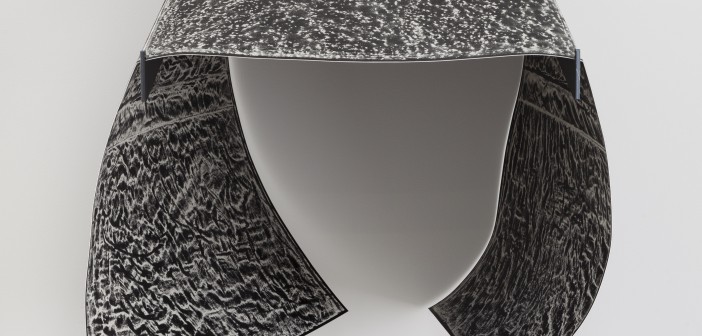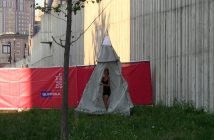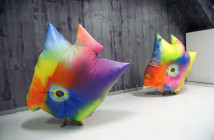Guest curated by Dina Deitsch, On Exactitude in Science behaves more like a territory than a gallery. The space is fluidly shared, rather than divided, between the installations of Jennifer Bornstein, Aslı Çavuşoğlu, Jumana Manna, and Elizabeth McAlpine, and placed insightfully by Deitsch’s close readings of the works. Each artist communicates and re-presents place through materiality and tactile representations. Collectively, they capture not only architectural elements of a space, but the very place itself, using techniques such as: rubbings, castings, psychic readings, and recorded action to name a few. Deitsch’s coupling of these four artists creates a kind of haptic awakening of sites that range from the interiors of the gallery to street-side porches.
The title of the exhibition is borrowed from Jorge Luis Borges's one-paragraph short story of the same name. In it, Borges describes an empire that maps itself using a 1:1 ratio. By creating a city map drawn to scale, the intended navigation tool is actually a useless document. Mapping in this way does, however, create a true index, described by Deitsch as, “a model of mapping by which a subject or surface is reproduced through the physical and concrete means of a trace or impression.” Taking a cue from the empire’s life-size mapping of the city, Bornstein, Çavuşoğlu, Manna, and McAlpine capture place in their prints, photograms, sculpture, and performances.
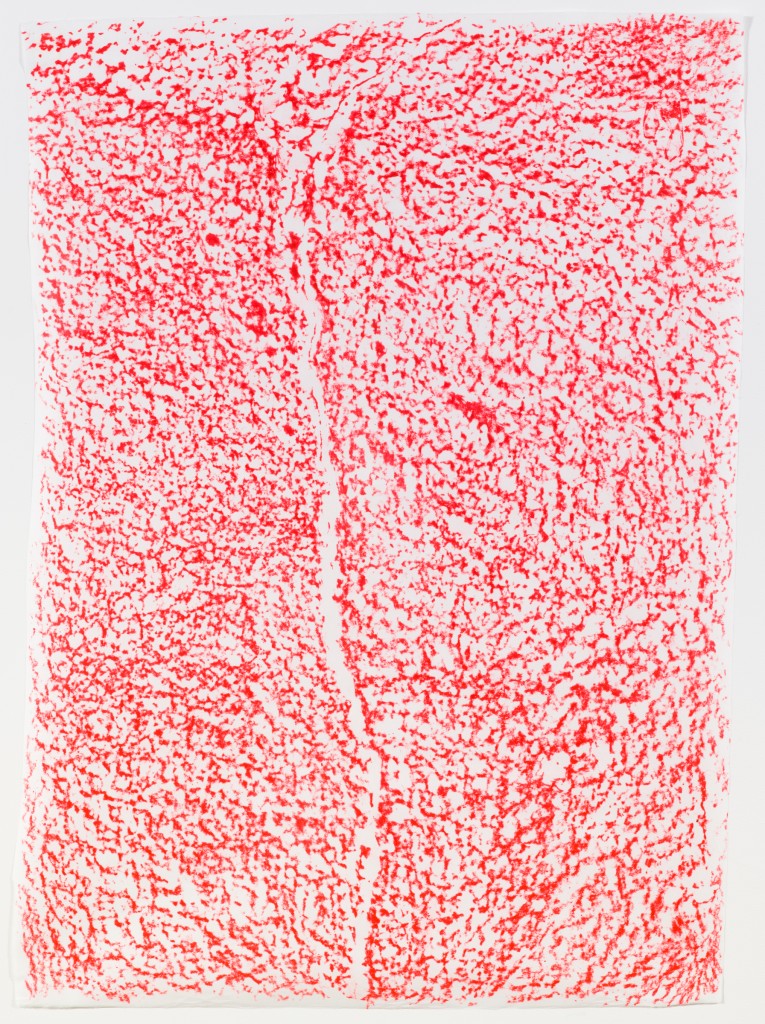
Jennifer Bornstein
Floor Crack, 2014
Rubbing; Wax on paper. 26 x 37 1/4 inches. Courtesy of the artist and Gavin Brown’s enterprise.
Jennifer Bornstein’s exceptional wall rubbings preserve the interior of the former building of the Dia Art Foundation. Bornstein uses the technique of rubbing, or frottage, to transfer the texture and slight surface dimension from three to a two-dimensional surface. The six drawings on view offer ruptured parts of the 1920s warehouse. Each drawing, pinned to the wall, is arranged in a patchwork orientation, piecing together several fragmented characteristics of the building’s infrastructure. Floor Crack (2014) is particularly a beautiful documentation of the site’s understated flaws, made visible by rubbed red wax. Bornstein’s gesture to transfer characteristics of an actual place onto the two-dimensional plane is a study in suspension; an effort to preserve the architectural facets that the artist knows will eventually be forgotten once the building is demolished or renovated.
Elizabeth McAlpine’s a journey around a noise machine; a journey around a noise machine: Score (2015) is a poetic gesture towards activating place through sound. Her compound installation begins with a video loop that documents her recorded action of “playing” a sidewalk with a makeshift record needle. McAlpine inelegantly pulls and scrapes the needle along the cracks in a sidewalk to produce an audible soundtrack simultaneously being played in the gallery. Like Bornstein, McAlpline creates rubbings of the traversed sidewalks not only to capture their essence of place but to suspend them in time. While Bornstein “suspends” a site in two-dimension, McAlpine physically hangs her re-presented sites in the form of sculptures. Her rubbings are used to print double-sided photographs where the ephemeral and pliable nature of paper is transformed into rigid, geometric sculptures. Angularly folded, and either propped up against the wall from the floor or mounted and draped from the gallery wall, their forms contradict their materials. With a crackled surface that resembles rubbed chalk on a chalkboard, they compliment McAlpine’s “score” in that the ambient crackle that floods the entryway of the gallery sounds like her rubbings look.
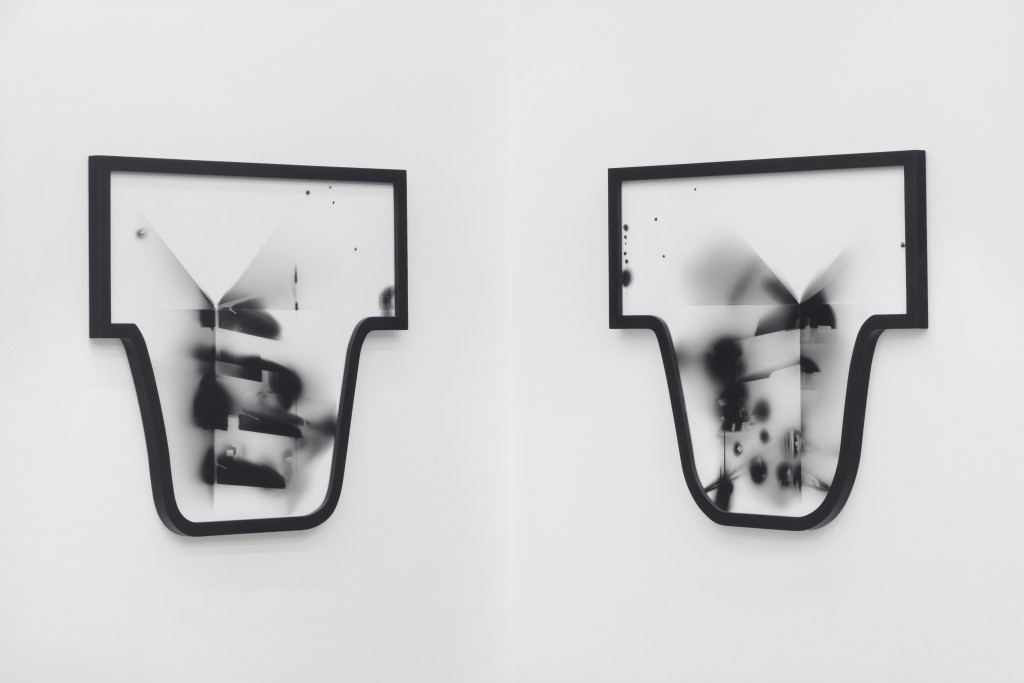
Elizabeth McAlpine
The Map of Exactitude (#13), 2012
Two photographs on positive paper, framed. 22 x 23 3/4 inches. Collection of Jean-Edouard Van Praet. Courtesy of the artist and Laurel Gitlen New York.
Aslı Çavuşoğlu mines architectural, built surfaces in an effort to uncover an archive of lost narratives. Like the other exhibiting artists in "On Exactitude in Science", historic modes of recording or interpreting place and the legibility of a site’s surface is crucial in Çavuşoğlu’s practice. Rooted in a series of performative walking tours, Çavuşoğlu will lead a group performance entitled, Words Dash Against the Façade (2016) on Saturday, March 5th. This performance revives an ancient practice of 'fortune-telling through building' with the aid of clairvoyants, historians, and architects. Çavuşoğlu, along with a group of artists, curators, and even a scientist, will “read” the architectural facades of several buildings along The Fenway beginning with SMFA. "The performance will be very improvisational to really think about the notion of various voices reading history," says Deitsch. "In a sense I don't think any of us know how it will really go but are excited by the group of participants."
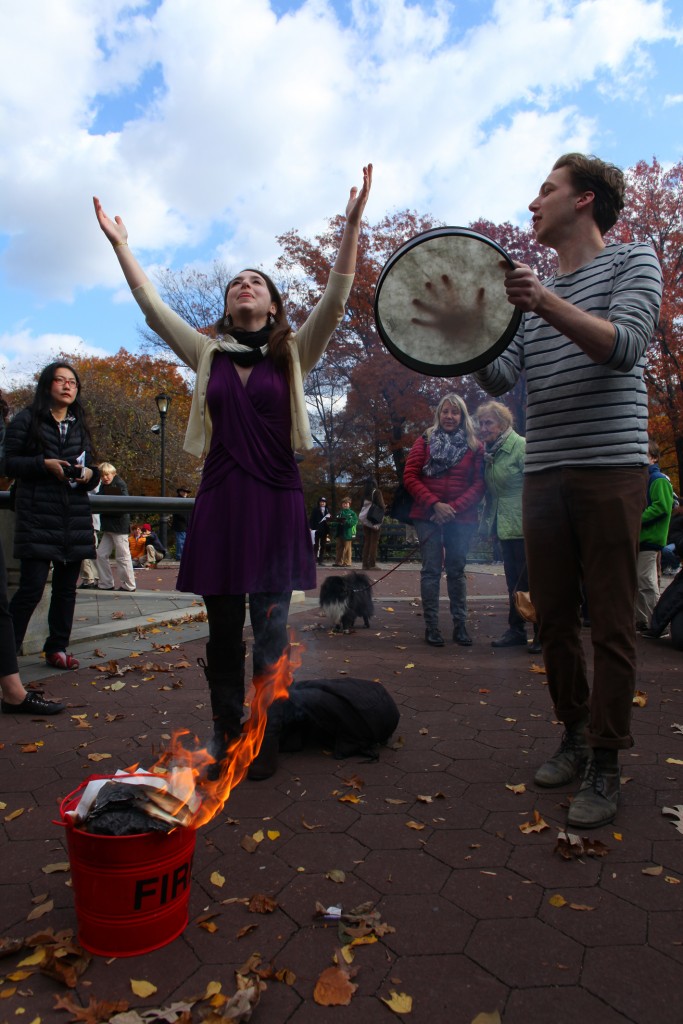
Aslı Çavuşoğlu
Words Dash Against the Façade, 2011/2016 Documentation of performance, New York, 2011 Originally commissioned by Performa11.
Photo by Paula Court.
Furthest from the entrance of the gallery rests Jumana Manna’s installation of neighborhood life in East Jerusalem. The American-born Palestinian artist sets herself apart from the other artists on view in that her re-presentations feel the most like the “true index” Deitch references in relation to the exhibition’s title. Manna’s work leaves a metaphorical “impression” within the gallery, in contrast, the literal and physical impressions created by Bornstein and McAlpine’s rubbings. Unlicensed Porches (2014) are recreations of limestone stoops from the Silwan neighborhood. Deitch expands upon this by saying, “Jumana's installation creates a space in that it becomes a social space - sitting on the sculptures/benches while watching and listening to the video.” Short, roughly finished, and set-like in appearance, Manna’s limestone and concrete composites create the feeling like each stoop is a prop in the larger narrative of a 1918 British mandate, requiring all construction in urban planning be of a certain color and material.
Stenciled and shaded in graphite along the wall leading to the gallery’s entrance and exit are the hand applied letters reading “on exactitudes in science”. It is a unique, direct correlation to the rubbings on view in the gallery articulating surface through touch. The myriad of textures along the surface of the wall span a terrain or territory; their subtle, tactile, characteristics of place guiding you into the gallery are the same compelling elements that Bornstein, Çavuşoğlu, Manna, and McAlpine employ to keep their audience engaged in the material investigation of the surface of place.
On Exactitude in Science is on view at the School of the Museum of Fine Arts through March 6.

